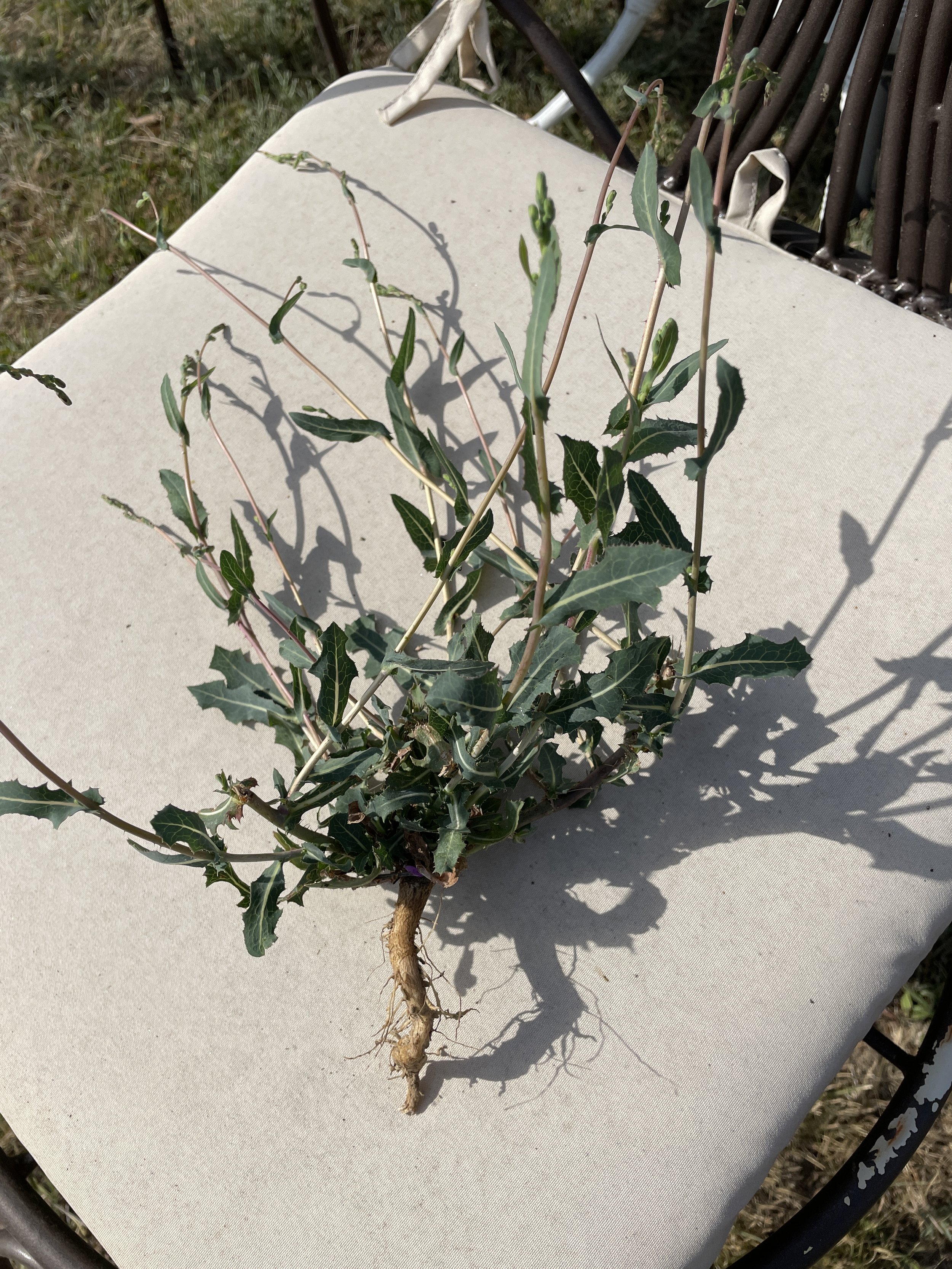Weeds of the Year 2025
It’s fairly well-known around Red Hawk Farm that I am the official Queen of Weeding. I love weeding more than any other part of gardening (aside from planning and visually enjoying and recording the results.) I particularly love weeds whose entire taproot comes out when you pull them. So satisfying!
Of course, around here we have no shortage of weeds. This place is carved out of an old, neglected cattle field. Everything is weeds. We will never defeat them.
Steve has his own evil chemical approach to the weed problem. He goes across the state line into low-regulatory Idaho to get what he calls, “the good stuff”. I have no concern about this at all. Montana has environmental heartburn about it, so Steve sneaks it in while she’s at work. He focuses primarily on the fence lines, which is so helpful because weed-whacking all of that real estate would be very time-consuming.
I, on the other hand, am strictly a hand-puller. Many of the weeds are downright scary and difficult to pull, especially in the hard, dry desert summer dirt. It can be exhausting. I have to be judicious in where I invest my weeding energy.
My rule is, “if you see a weed, pull a weed”. So as I am randomly walking around, I try not ignore to ignore obvious, pull-able weeds. But I also pick one or two weeds to really focus on each year.
These are the two I have specifically declared war on in 2025:
The first is prickly pear. It starts out as an innocent little single vertical stem and quickly turns beastly. The good news is that they are super easy to spot and they pull out relatively easily. If I see these anywhere I attack. We have a ton of these in between the baby trees in the front field, more than I can pull by hand. I will have to either ignore them or send Steve in with the chemical guns.
The second weed of focus is REALLY hard to pull. A Google search suggests its name might be stephanomeria runcinata. These guys have super deep and thick taproots and are also very networked together just below the soil line. Nasty! There are a lot of these in my garden grass areas, particularly the large area between the raised and in-ground beds. By this time of year most are impossible to pull, but that doesn’t keep me from scraping my hands ragged trying!
Honestly, the futility of this fight is pretty obvious. By July all of the actual grass that is not near a water source (such as between my garden beds) has gone dormant and brown, so really it’s only the weeds that provide any green we see! But I can’t help myself, it’s my destiny to at least keep giving it some concerted effort.








